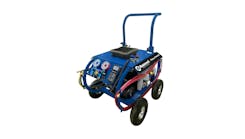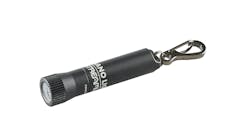A lift is a big buy in many ways. It takes up a significant amount of precious floor space in busy maintenance facilities and repair shops, and the work a lift provides is significant. This is one investment that deserves the utmost thought and care … to ensure both ROI and a safe work environment. Attention to lifting equipment doesn’t stop after the purchase, either. Routine technician training, best practices, and a structured maintenance schedule should all be top-of mind years after this equipment is installed.
In this guide we review the various types of lifts available for professional maintenance and repair work, as well as key updates in lift technology and features, and installation and maintenance best practices.
It’s important that shop owners and facility managers select the equipment that will work for the vehicles their shop services. Other considerations like the type of services performed, physical shop size and features, and state and local building codes will all factor into the buying decision. Luckily, purchasers do not have to make this decision alone.
Buying is just the beginning
Shops should always bear in mind that improper lift use, or not paying close attention while operating, can be costly and dangerous, resulting in critical injuries or worse. That’s why, in addition to a lift’s features and capabilities, careful thought should also be paid to preventative safety measures, maintenance, and overall safety guidelines for this equipment.
It is the duty of shop owners and facility managers to provide their workers with up-to-date information, instruction, and supervision in the interest of health and safety. Make sure all lifts and lift equipment are certified by the Automotive Lift Institute (ALI), and regularly inspected by a qualified lift inspector annually (at minimum). See to it that only qualified contractors are making repairs. Verify the equipment and its accessories are functioning properly, including swing arms and swing arm pads, restraint devices, hoists, etc. (replacement lift parts must meet OEM specifications to maintain ALI certification). Instruct all lift operators in their facility in safe use and operation, using manufacturer-provided instructions and warning labels. Work with manufacturer recommendations to establish periodic planned maintenance for maximum reliability and safe operation.
It’s an exciting time to research and purchase lifting equipment that can help take your business to the next level of productivity, as more lift manufactures are incorporating new ease-of-use and safety features into their overall design. Still, it’s more important than ever to follow maintenance schedules and document every procedure.
Make information and best practices a priority when it comes to your lift purchases and upkeep.


